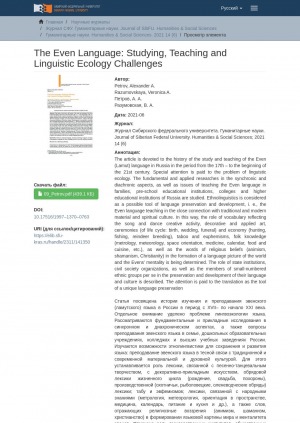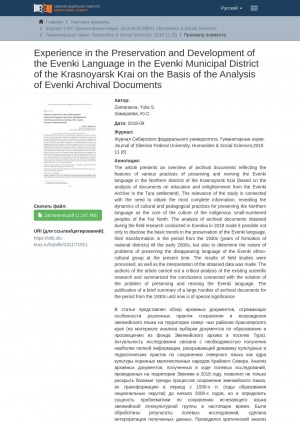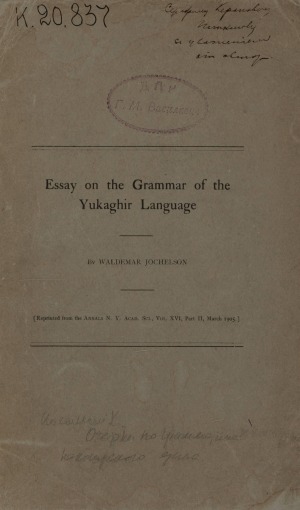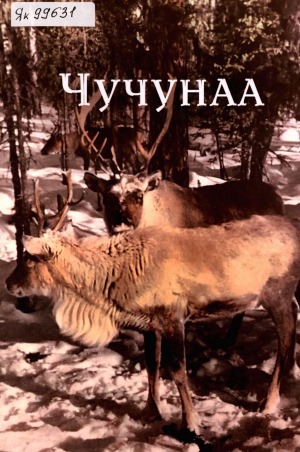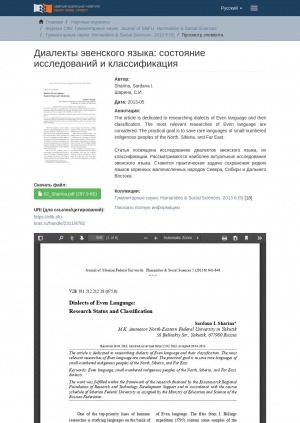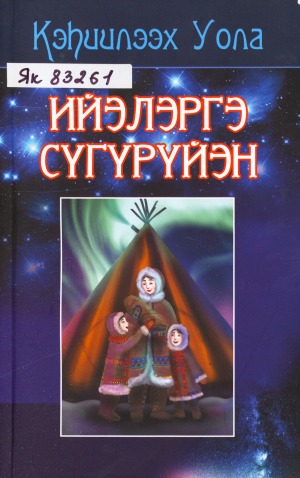- Книга (1472)
- Газета (10)
- Журнал (155)
- Автореферат диссертации (43)
- Изоиздание (1)
- Аудиоиздание (50)
- Видеоиздание (322)
- Неопубликованный документ (2)
- Нотное издание (10)
- Фотография (12)
- Статья (257)
- Библиографический указатель (50)
- Словарь (78)
- Календарь (1)
- Брошюра (25)
- Буклет (5)
- Электронное издание (2)
- 3D-модель (2)
- Грампластинка (6)
- Веб-архив (178)
- Чукотский (24)
- Долганский (11)
- Английский (29)
- Эскимоский (3)
- Эвенкийский (69)
- Эвенский (228)
- Французский (1)
- Немецкий (1)
- Хантыйский (2)
- Корякский (4)
- Мансийский (2)
- Нанайский (7)
- Ненецкий (5)
- Нганасанский (1)
- Нивхский (6)
- Старорусский (4)
- Русский (2005)
- Латинская графика (4)
- Тунгусский (8)
- Якутский (215)
- Юкагирский (51)
Год выпуска: 2021
Статья посвящена истории изучения и преподавания эвенского (ламутского) языка в России в период с XVII– по начало XXI века. Отдельное внимание уделено проблеме лингвоэкологии языка. Рассматриваются фундаментальные и прикладные исследования в синхронном и диахроническом аспектах, а также вопросы преподавания эвенского языка в семье, дошкольных образовательных учреждениях, колледжах и высших учебных заведениях России. Изучаются возможности этнолингвистики для сохранения и развития языка: преподавание эвенского языка в тесной связи с традиционной и современной материальной и духовной культурой. Для этого устанавливается роль лексики, связанной с песенно-танцевальным творчеством, с декоративно-прикладным искусством, обрядовой лексики жизненного цикла (рождение, свадьба, похороны), производственной (охотничьи, рыболовецкие, оленеводческие обряды) лексики; табу и эвфемизмов; лексики, связанной с народными знаниями (метрология, метеорология, ориентация в пространстве, медицина, календарь, питание и кухня и др.), а также слов, отражающих религиозные воззрения (анимизм, шаманизм, христианство) в формировании языковой картины мира и менталитета эвенов. Отмечена роль государственных институтов, общественных организаций, а также самих представителей малочисленного этноса в сохранении и развитии своих языка и культуры. Обращено внимание на перевод как инструмент сохранения уникального языка
Год выпуска: 2016
Статья посвящена анализу сюжетного материала и структуры долганских сказок. Авторы считают, что северный фольклор является не только частью самобытного устного творчества коренных народов, но и важной составляющей в формировании этнической идентичности. В связи с этим изучение сюжетов позволит понять особенности северной культуры долганского народа, выявить структуру и устройство сконструированного в сказках мира
Год выпуска: 2018
В статье представлен обзор архивных документов, отражающих особенности различных практик сохранения и возрождения эвенкийского языка на территории север- ных районов Красноярского края (на материале анализа выборки документов по образованию и просвещению из фонда Эвенкийского архива в поселке Тура). Актуальность исследования связана с необходимостью получения наиболее полной информации, раскрывающей динамику культурных и педагогических практик по сохранению северного языка как ядра культуры коренных малочисленных народов Крайнего Севера. Анализ архивных документов, полученных в ходе полевых исследований, проведенных на территории Эвенкии в 2018 году, позволил не только раскрыть базовые тренды процессов сохранения эвенкийского языка, их трансформацию в период с 1930-х гг. (годы образования национальных округов) до начала 2000-х годов, но и определить сущность проблематики по сохранению исчезающего языка эвенкийской этнокультурной группы в настоящее время. Были обработаны результаты полевых исследований, сделана интерпретация полученных данных. Проводился критический анализ существующих научных исследований, обобщены выводы исследователей, связанных с решением проблемы сохранения и возрождения эвенкийского языка. Особую значимость имеет публикация краткого содержания большого количества архивных документов за период с 1930 гг. по настоящее время
Год выпуска: 2014
В статье предпринята попытка выявления некоторых особенностей языка верхнеколымских эвенов, которые не были отмечены ранее в публикациях исследователей. Наряду с характерными для говоров западного наречия отличиями при детальном рассмотрении обнаруживаются и грамматические особенности, нетипичные для других эвенских диалектов, что должно быть учтено при отнесении данного говора к определенным наречиям
Год выпуска: 1906
Количество страниц: 66 с.
- Юкагирский язык > Научные труды,
- Учимся говорить на языках народов Севера > Юкагирский язык > Языкознание,
- Языки народов Якутии > Юкагирский язык > Научные труды,
- Города Якутии: Среднеколымск > Колымская ссылка,
- Языкознание. Филология. Художественная литература,
- КНИГАКАН > Все народы > Юкагиры (палеоазиатская группа языков) > Языкознание.
Издательство: Ю. А. Гагарин аатынан Саха Өрөспүүбүлүкэтин типографията
Год выпуска: 2023
Количество страниц: 44 с.
Год выпуска: 2018
В 1997 и в 2017 годах в Эвенкии были проведены комплексные исследования по современным этническим процессам с использованием метода массового опроса. Выявлены существенные изменения в хозяйстве, в разных областях материальной и духовной культуры. Резко снизилось значение оленеводства, в настоящее время в нем заняты около 1/10 части эвенкийских семей. Лучше сохранились охота и рыболовство, в них занята почти треть мужчин. На любительском уровне охотой и рыболовством занимается подавляющее большинство мужчин, а значительная часть женщин не утеряли навыков шитья и вышивки бисером. Активно идет процесс языковой ассимиляции, дети практически не говорят на языке эвенков и не понимают его, хотя большинство эвенков изучает родной язык в школе. Количество национально-смешанных семей, в основном с русскими, приблизилось к половине всех семей, большинство детей вливаются в эвенкийский этнос. В результате этих браков доля метисов среди эвенков приближается к 2/3, а среди детей их доля достигла 9/10. Эвенки превращаются в группу русскоязычных метисов, но с устойчивым этническим самосознанием и с сохранением элементов традиционной культуры в некоторых областях материальной и духовной культуры
Год выпуска: 2013
Данная статья посвящена якутским лексическим заимствованиям, отражающим непосредственное контактирование эвенкийского языка с якутским, и их функционированию в социолингвистическом аспекте в фольклорных текстах эвенков Амурской области
Год выпуска: 2013
- Эвенский язык > Научные труды по эвенскому языку,
- Учимся говорить на языках народов Севера > Эвенский язык > Языкознание,
- Языки народов Якутии > Эвенский язык > Научные труды по эвенскому языку,
- Религия. Теология,
- Языкознание. Филология. Художественная литература,
- КНИГАКАН > Все народы > Эвены (тунгусо-маньчжурская группа языков) > Языкознание.
Статья посвящена исследованию диалектов эвенского языка, их классификации. Рассматриваются наиболее актуальные исследования эвенского языка. Ставится практическая задача сохранения редких языков коренных малочисленных народов Севера, Сибири и Дальнего Востока
Издательство: Сайдам
Год выпуска: 2018
Количество страниц: 116 с.
- Ийэ сылааһа - Материнское тепло > Образ матери в творчестве якутских писателей,
- Сохранение семейных традиций коренных малочисленных народов > Семейная культура коренных малочисленных народов,
- Языкознание. Филология. Художественная литература,
- КНИГАКАН > Все народы > Долганы (тюркская группа языков) > Художественная литература.
